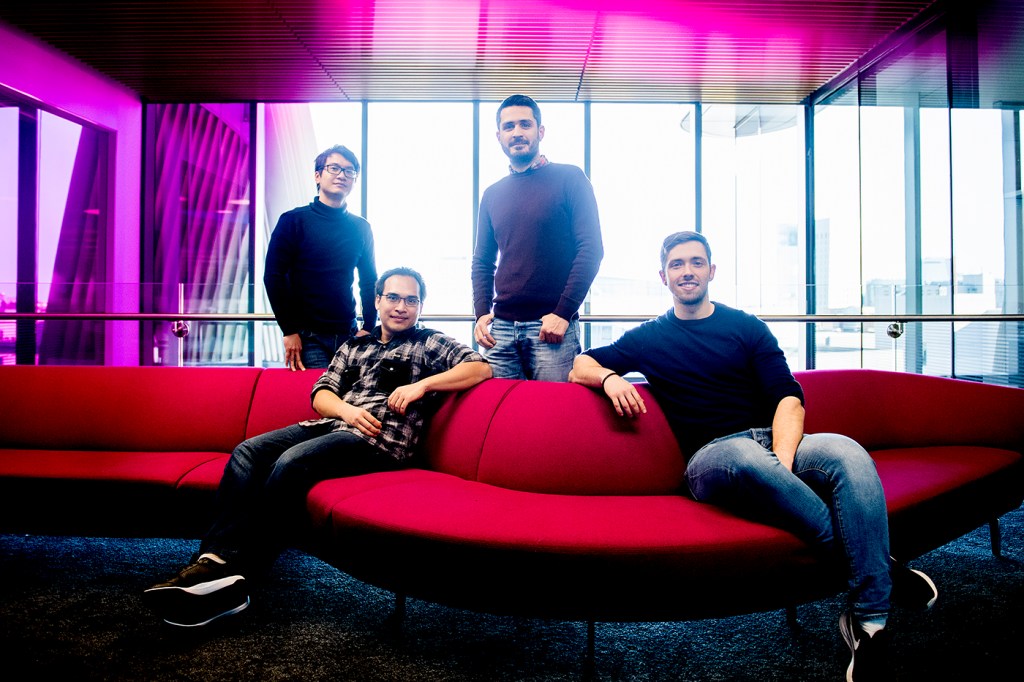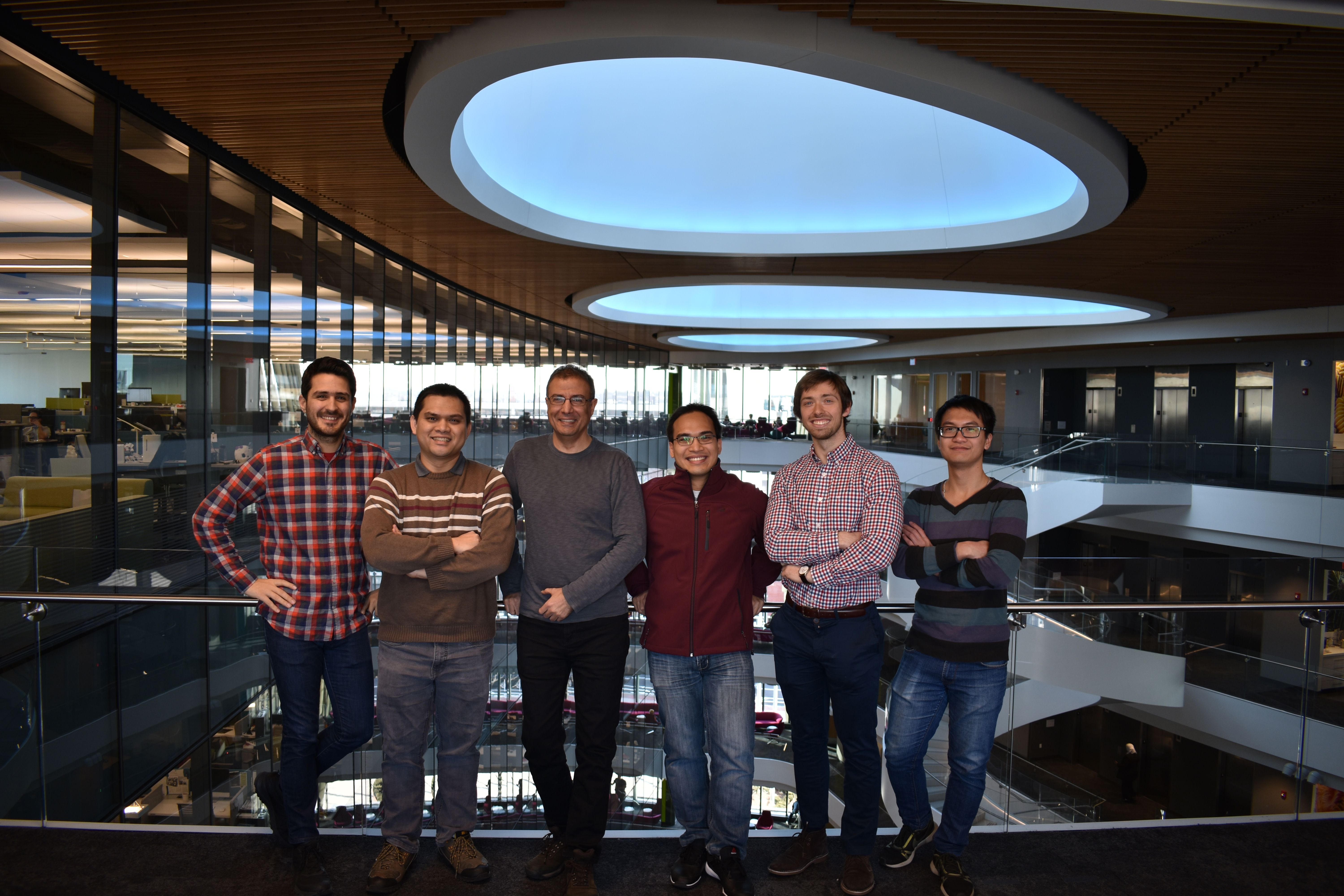With nearly $1 million on the line, this Northeastern team had to think fast

The fun thing about problems is that sometimes, as soon as you’ve solved one, another one pops up, like a gopher.
For a team of Northeastern computer science faculty and students, a problem of a different nature presented itself mere hours before a crucial deadline. They have devoted themselves to taking a whack at autonomizing the sharing of the radio spectrum, a finite resource that’s regulated by the Federal Communications Commission.
But, with the clock ticking down to the early morning hours of Nov. 28, the deadline for a competition run by the Defense Advanced Research Projects Agency, the research arm of the U.S. Department of Defense that was behind the creation of the internet and self-driving cars, the faculty and students were challenged to troubleshoot a real life problem that blindsided them.
Just as they were putting the final touches on the radio systems they had been working on as part of their three-year project, the basement of Northeastern’s Interdisciplinary Science and Engineering Complex flooded. The resulting power outage threatened their chances of submitting their project on time.
Acting quickly, the team members loaded a cart with servers and monitors and shoved them onto an elevator with teammate Norbert Ludant and their advisor, Guevara Noubir, a professor in the Khoury College of Computer Sciences. The idea was that if the elevator stopped working midway through their journey, the two of them could rescue the equipment. Everyone crossed their fingers.
Fortunately, Noubir, Ludant, and the equipment all made it out safely. The students rolled the carts across campus to West Village, searched for an empty classroom, found a way to configure everything, and got to work as they nervously stared down a 6 a.m. deadline.
“Of course we were worried,” said Marinos Vomvas, one of four doctoral students involved in the project. Especially so, he said, because of the fierce competition. His team was up against some heavy hitters, including defense contractors BAE Systems and Northrop Grumman, a few startups, and top international research centers.
Northeastern is one of 15 teams in the competition trying to create a wireless solution to enable radio networks to collaborate autonomously. Solving this problem could benefit the military, emergency services, and radio and TV, all sectors that must share this limited spectrum.
Put another way, imagine a multiple-lane road where everyone is moving freely on any lane, said team member Tien Vo-Huu.
“Now if there is an emergency everyone will try to keep at least one lane clear so the high-priority vehicles can go through quickly,” Vo-Huu said. “Each team therefore has to negotiate among themselves to find the most efficient way not only to help the high-priority ones but also not to slow down too much the normal traffic. All these things have to be automatic, smart, and fast.”
The Spectrum Collaboration Challenge challenge is defined by the Defense Advanced Research Projects Agency as a first-of-its-kind collaborative machine-learning competition, applied to a century-old wireless communications problem. The competitors are tasked with reimagining the wireless communications of networks-of-networks from scratch. The contestant teams have to create radio networks that can autonomously collaborate to dynamically devise spectrum access strategies, protect legacy systems, and mitigate jammers, in a variety of channel conditions, mobility, and network topologies. The networks need to satisfy the demands of civilian and military scenarios with thousands of communications flows of diverse throughput, delay, and reliability constraints.

Professor Guevara Noubir, third from the left, co-designed the algorithms with assistant research professor Triet Vo-Huu, second from the left. Courtesy photo.
Noubir is leading the team along with assistant research professor Triet Vo-Huu. The two co-designed the algorithms; Vo-Huu also did lion’s share of the work in developing the system the Northeastern team, which goes by the name Sprite, used in the competition. Triet Vo-Huu is the brother of Tien Vo-Huu.
Noubir reflected on the significance of the team’s work.
“With billions of wireless devices fueling the mobile and Internet of Things revolution, there is a huge need for robust and scalable communications. Today’s technology and standards cannot handle this need, from sustaining demand, effectively using the radio spectrum to overcoming attacks on the spectrum,” Noubir said. “Leveraging the flexibility of software defined radio to support advanced optimization and machine learning algorithms is allowing us to take a fresh look at this century old problem.”
“Thousands of hours were dedicated to testing, evaluating, and tuning our system to a wide variety of challenging wireless environments ranging from emergency scenarios such as wildfire communications to sharing the spectrum with the presence of incumbents and jammers,” Triet Vo-Huu said. This competition is a great opportunity to contribute to the development of a new kind of smart wireless technology, and being a part of it has been both exciting and motivating to all of us.”
After overcoming the crisis at the Interdisciplinary Science and Engineering Complex, Team Sprite worked through the morning hours and made their deadline. Two weeks later, they flourished in the competition hosted by the Johns Hopkins University Applied Physics Laboratory, taking home $750,000 and bringing their winnings up to $1.5 million, which will enable them to continue competing and take on more complex projects in the future.
Not bad for a lot of hard work.
There is an additional $2 million at stake at the final competition in October, set to take place in conjunction with Mobile World Congress, a telecommunications exhibition in Los Angeles.
But there’s still quite a bit of algorithms design and system development to do before then. If they’re going to prove that they are the team that can effectively solve the spectrum scarcity problem, they will have to get back in the lab and design new algorithms.
The contest may still be nine months away, but the team members are putting in six to eight hours of work nearly every day, to finish the project in time. It’s exciting and it’s stressful, but it’s nothing the team isn’t prepared for.
“We knew it was going to be hard work,” said Vomvas. “The offer is so much.”
For media inquiries, please contact media@northeastern.edu.





